THE NEAL ADAMS CHRONICLES: A birthday salute to the late Filipino trailblazer — and his connection to Adams…
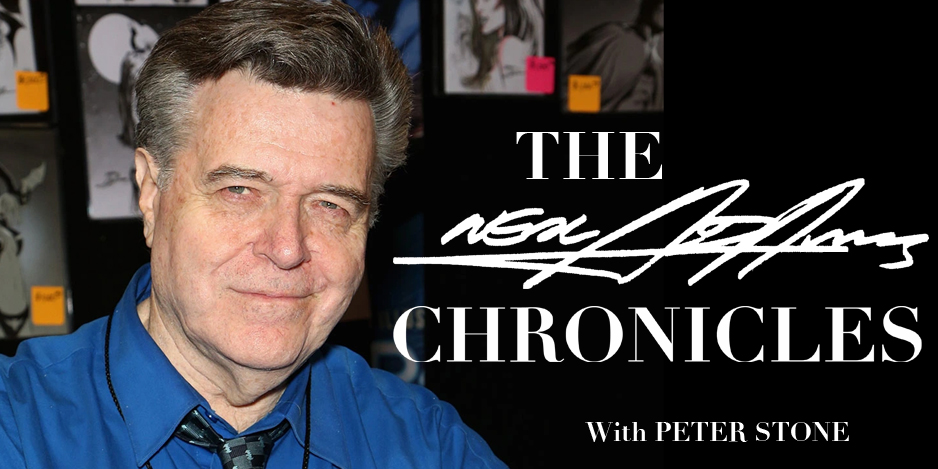
By PETER STONE
The late Tony DeZuniga — born Nov. 8, 1932 — was the first Filipino comic book artist who was accepted by American comic book publishers. Since half of the Second World War occurred in the Pacific Theater, there were almost two million U.S. troops stationed there in 1945. At the same time in the United States, comic books and comic book heroes were exploding. Some of the highest print runs were recorded in the years just before, and during, WWII. Superman was created. Batman, Wonder Woman and the JSA. Captain America, the Human Torch and the Sub-Mariner, just to same some.
Many of those comic books were either given to children or left behind on or near Army bases. Hence, the dawn of comics in the Philippines, where some of the largest Army, Navy, Air Force and Marine bases were. An entire generation saw costumed heroes fighting against fascist dictators.
After the war, the U.S. troops withdrew for the most part, but left behind their military bases. The American influence was still there. So were comic books and newspaper comic strips. However, the general population was also influenced by their neighbors, the Chinese, the Japanese and many other Asian countries. What grew from this fervent soil was a totally unique and interesting style of art. From the Chinese and Japanese came the love of brush work; long, lush strokes that were symbolic of emotion rather than reality. They loved monsters with carefully rendered scales and terrible, gleaming claws. Women with bold, sensual hips and legs and stunning long, dark hair.
There was an art style cultivated there that the world needed to see.
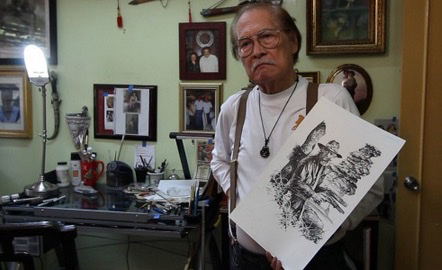
Tony DeZuniga
But by the late 1960s, America was too overwhelmed by the brilliance of Carmine Infantino and the purity of Alex Toth. By Curt Swan and Murphy Anderson. Hal Foster and Alex Raymond. What no one at the time knew was that there was a young whippersnapper named Neal Adams who was working at Johnston and Cushing where he learned about taking photographs and how to ink from an Asian man. (No, he never told me his name because he probably didn’t remember it.)
That man showed him how to use a brush, how to hold a pencil, how to make a line thick and thin without breaking the stroke. Neal was studying Stan Drake to figure that technique out, but hadn’t mastered it yet. Neal once asked me to pull the pencil out of his hand, and after some convincing, I did. It slid out smooth as melted butter. As he was penciling! He said that’s what he learned from that Asian man. Oh, said Neal, draw from your shoulder. It allows you to draw longer, smoother lines. American inkers don’t understand that. They draw from their wrists.
Damned if he wasn’t right. I can’t draw for shit but his simple instruction made me understand why he sat up straight and inked for hours and hours and hours. He was a master.
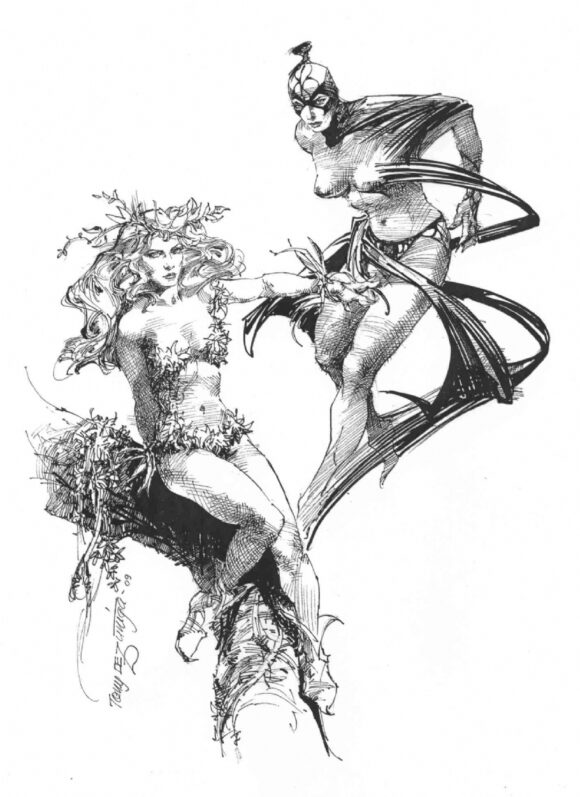
Poison Ivy/Black Orchid commission by DeZuniga
But Pete, what does ALL THAT have to do with Tony DeZuniga?! Well, Carmine Infantino was the publisher of DC Comics when Neal was working there. Through Joe Orlando came a penciled job by some guy no one had ever heard of. Tony DeZuniga. He had penciled a job that Joe Orlando gave him.
Carmine hated it.
Neal, in the production room as he almost always was in those days, asked Carmine what was wrong with the job he was so unhappy with. Carmine threw the pages across the production desk and said they were awful. Neal picked them up and carefully examined them. Nothing wrong with these pages, he thought. He had heard that DeZuniga was Filipino so maybe that’s why he was so interested. So, Neal said something like, “Wait, wait. Carmine, I can fix this. I can make this printable. In fact, it won’t even take very long. Like two nights. OK?”
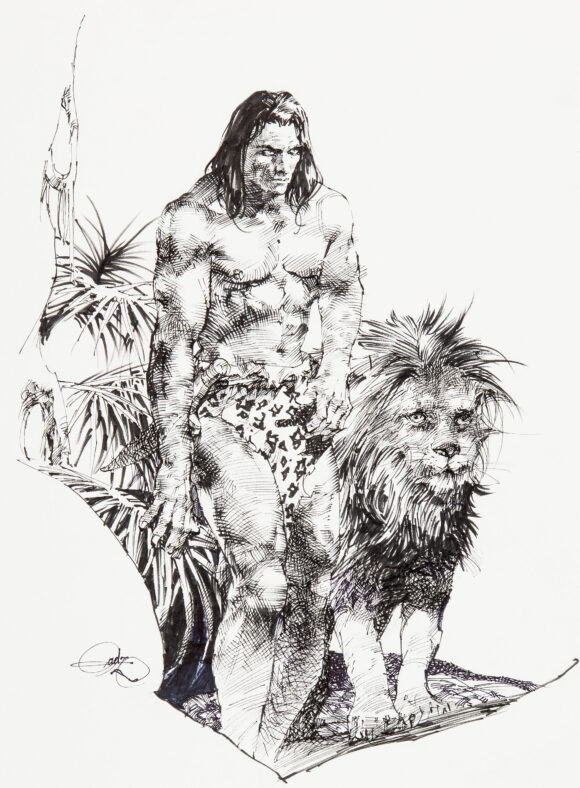
DeZuniga’s Tarzan
Carmine said fine, secretly wanting Neal to re-pencil the entire job, I’m sure. So, Neal took the story home to “fix” it. He told me he did the barest alterations… a face here and there to make it more “Western” or “American.” It took him a couple days along with his other deadlines, but when he finished he looked seriously at the job and saw that there was nothing wrong with the pages. They were fine without any of his “corrections,” but Carmine needed that “American” touch. Neal knew that DeZuniga was a good artist that DC Comics should be hiring and using on a regular basis. Neal believed that completely. He also knew that if there was one of these artists from the Philippines, there must be more.
The next day, Neal presented the altered pages to Carmine who looked only briefly at them and said they were fine. Did he have a change of heart, Neal wondered. Would he have used the job as it originally was? Well, Neal supposed, it doesn’t really matter. Tony had his first job and it would open a door. He would go on to co-create the legendary Western hero Jonah Hex with John Albano and Black Orchid with Sheldon Mayer.
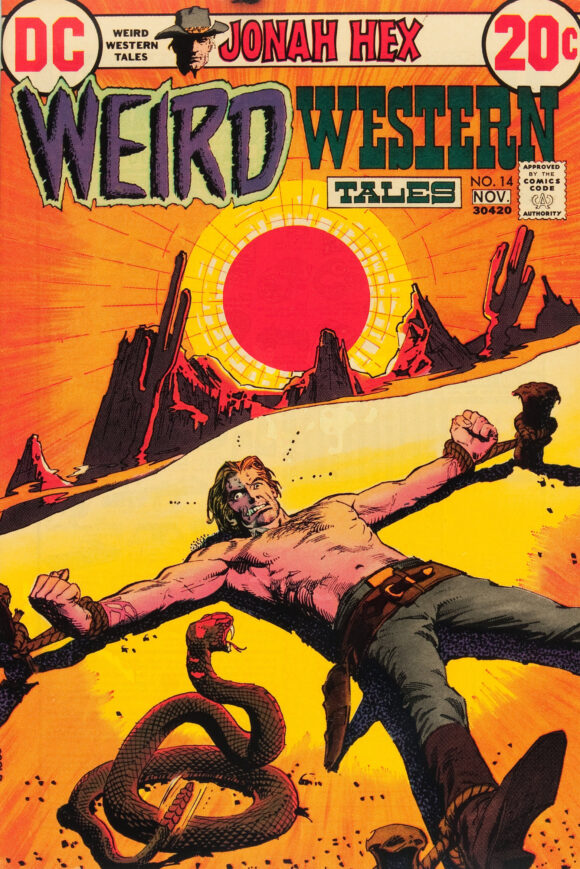
DeZuniga
Carmine and Joe Orlando would travel to the Philippines on what they called a recruiting trip. At that point, there was a thriving (albeit localized) comic book industry. With Tony’s help to guide the way, the comic industry gained the vastly talented artistic skills of Alfredo Alcala (whose exceptional inks over John Buscema on Conan were a part of my childhood); Alex Nino (whose Robert E. Howard story in Marvel Treasury Edition #19 blew me away); the “father” of Filipino artists Nestor Redondo (who worked at DC Comics on supernatural titles like The Witching Hour), and one of my favorite Filipino artists Rudy Nebres (Continuity Comics’ resident Armor/Shaman/Samuree inker, brilliant inker of Kull for Marvel, penciler and inker of Iron Fist for Marvel’s Deadly Hands of Kung Fu – which blew my 15 year old mind.)
Neal hired any artist who had talent, proven out by the fact that he gave work to Romeo Tanghal for years in comics and commercial work; hired Nebres to work in his studio on comics, storyboards and animatics; hired Nino to paint a Shaman graphic novel and design the demon motif that adorned the Rise of Magic comic covers; and worshipped (and I don’t use that term lightly) Ernesto Infante (also known as Nestor Infante).
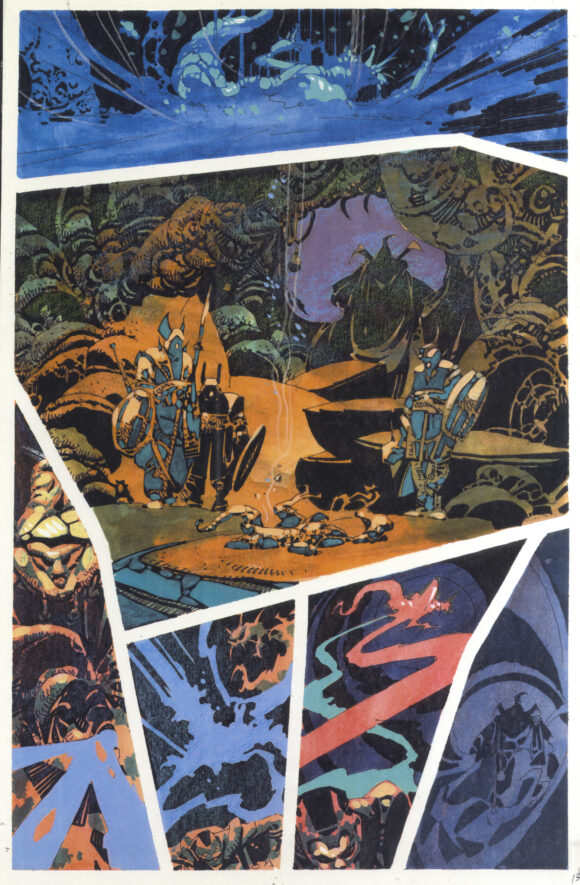
Shaman by Nino
As a side note (and I’m sure I’ve said this before) Neal was threatened artistically by only two artists that I’m aware of. One was the raw talent of Mark Beachum. He said Mark could draw people as well as he could and sometimes better, but had a particular fixation on female anatomy that made much of his work difficult to work with. Samuree, co-designed and drawn by Mark was considered too NSFW when it appeared. These days, Samuree might as well be wearing a burlap sack. Mark, in my opinion and mine alone, started a wave of sexy women drawings that exists today.
The other artist that Neal was truly intimidated by was Ernesto Infante, brought to him by Romeo Tanghal. Neal immediately recognized his talent and knowledge.
“Pete – give him that Megalith script,” he said. “We’ll try him on that.” When the art came in, Ernesto was like Roy Hobbs in The Natural. Some guy from nowhere who hit the ball so hard and so well that it shattered the lights of the stadium. Neal made sure he always had work and DEMANDED that he ink as much of Ernesto’s work as he could get into his portfolio.
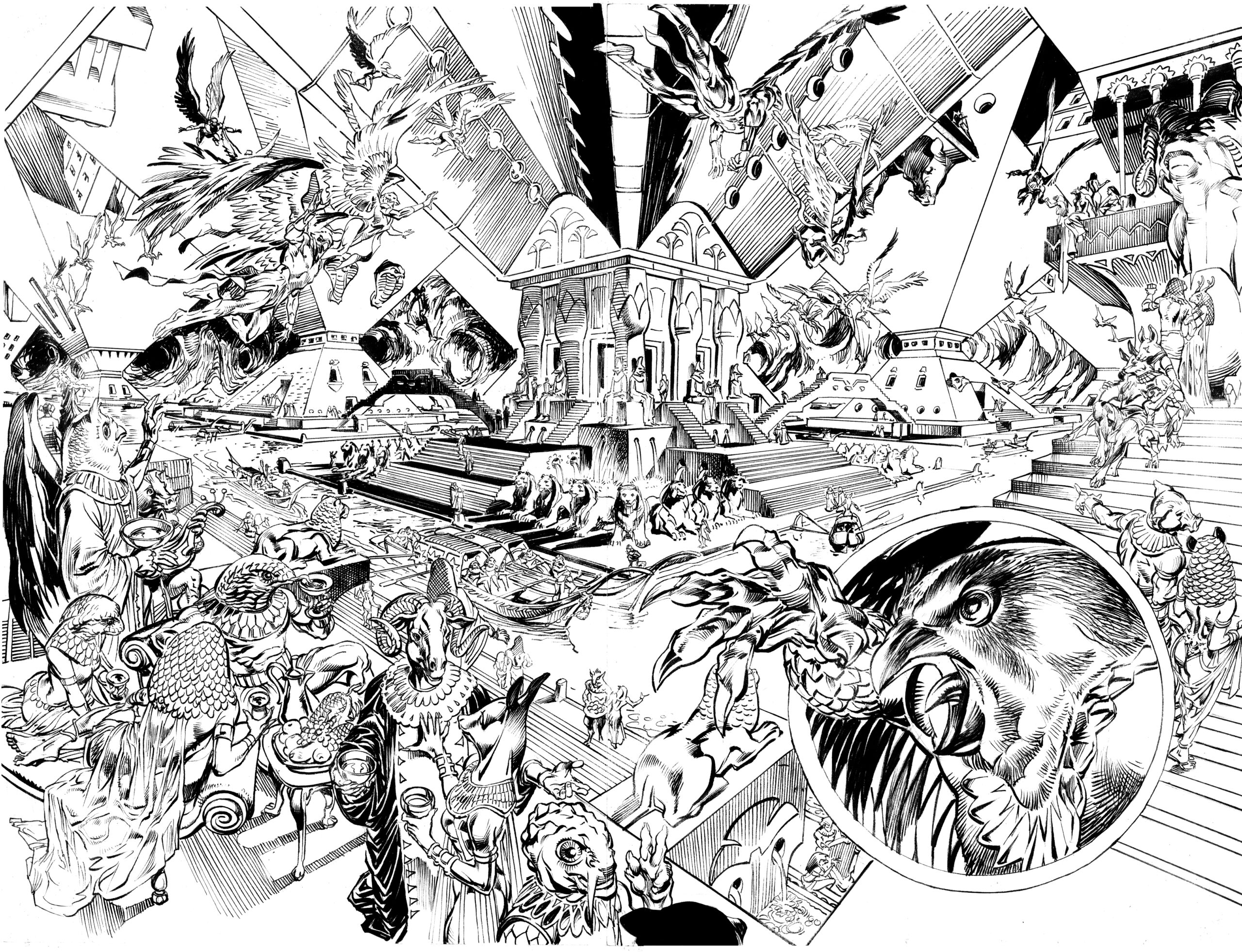
Ernesto Infante
One of my fondest memories of talking with Neal has to do with a Samuree spread of a city of Egyptian Gods under the Great Pyramid of Giza. We talked about the design work Ernesto put into it, the half-human/half-animal gods who lived there, the physics of turning pyramids upside down, and so many other things. Neal barked at everyone who wanted to disturb him and we talked for easily two hours. One day, I hope this art will be seen by the world and I’d be glad to talk to anyone about it.
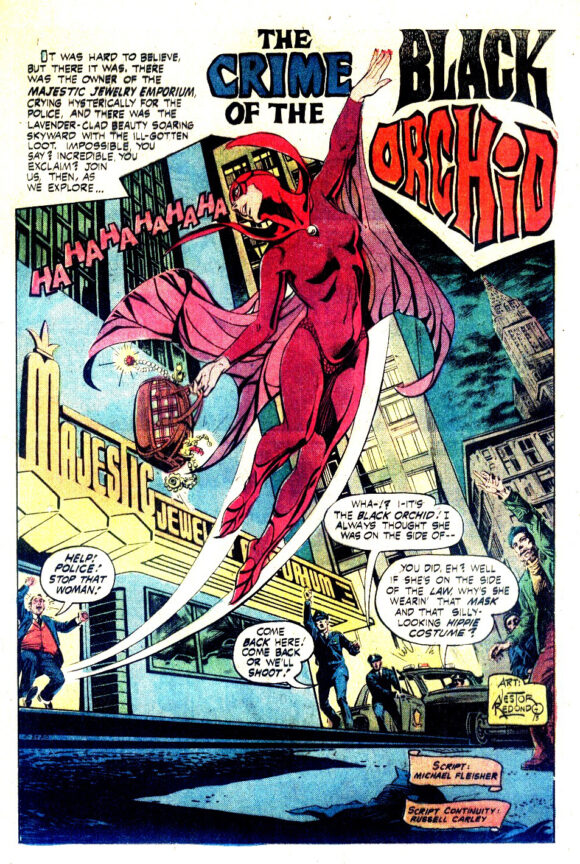
From DC’s The Phantom Stranger #32. Art by Nestor Redondo.
All of this came from the door that Tony DeZuniga helped open. Neal knew the Filipinos had tremendous talent and a wonderful combination of Western and Eastern art styles. They, as a society and culture, get to absorb so many different art styles. I will never say that putting the military in an area is a good idea, but it did influence the Filipinos tremendously.
Of course there were downsides, like the fact that the Philippines didn’t have access to seeing real original comics art so they drew their pages at the same size as the PRINTED comics. Did that make them better? Maybe. That and giving these poor artists real two-ply comic paper so the inker wouldn’t say that his work vanished into the soft, pliable material they called paper. (Sorry, guys… it was terrible to work with.)
These days, a whole new breed of Filipino artists are everywhere, filling comics with unique and different styles. Artists like Leinil Francis Yu, Phillip Tan, Dexter Soy, the Luna Brothers, Francis Manapul, Jerome Opena, Whilce Portacio and so many others.
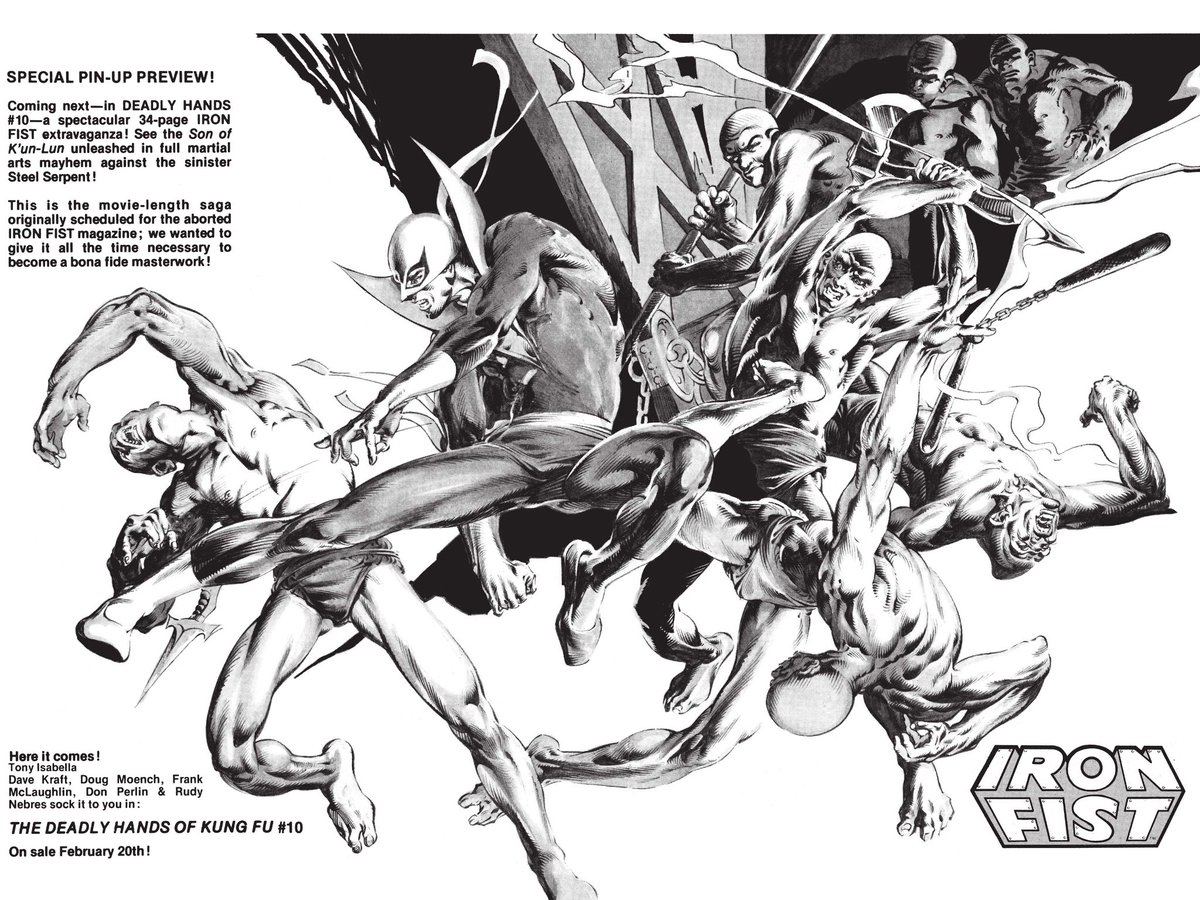
From Marvel’s The Deadly Hands of Kung Fu #9. Pencils by Frank McLaughlin, inks by Rudy Nebres.
They allowed the South and Central American artists to enter the American comics scene. Neal picked Ed Benes and Joe Bennett and wanted to work with Carlos Meglia (whose work on Superman/Tarzan for Dark Horse and Superman: Infinite City for DC was brilliant); Jorge Zaffino (who was lured by Marvel Comics to draw the Punisher and whose son is carrying on his visceral and intense art style); and Mike Deodato Jr. (a superstar at Marvel, DC and AWA).
In the end, Tony DeZuniga (and possibly Neal Adams) opened the door to comic book creators from around the world. The same kind of young illustrators who grew up on the mean streets of the Bronx, the Lower East Side, Brooklyn, Harlem, Detroit, London, San Diego, and so on, where they dreamed of getting the chance to draw their favorite heroes and maybe, just maybe, if they were good enough and got the right break, see their work on a local newsstand.
Tony and all those others just dreamed about waking up in the morning with the joy of spending their days drawing their heroes… and getting paid for it.
They really couldn’t ask for a better life than that. They just needed someone to crack open the door for them. Just a little bit.
—
MORE
— 13 COVERS: A TONY DeZUNIGA Birthday Celebration. Click here.
— The RA’S AL GHUL CONNECTION: A Thank You to PAUL LEVITZ For Supporting Artists and Writers. Click here.
—
Peter Stone is a writer and son-in-law of the late Neal Adams. Be sure to check out the family’s twice-weekly online Facebook auctions, as well as the NealAdamsStore.com, and their Burbank, California, comics shop Crusty Bunkers Comics and Toys.

November 8, 2023
Hey Peter,
Great article! I worked with Tony at Sega. He was doing all the concept work for the games at the time. The cover art for ComixZone was Tony’s. He was one of the nice and most generous people I have known and would hand out stacks of drawings to me all the time!
November 9, 2023
I wasn’t familiar with Beachum, but what I pulled up on a search was eye opening. I’m not sure where you’re coming from with the burlap sack description b/c that stuff is gorgeous and racy as hell, like Neal adams spliced with Milo Manara.